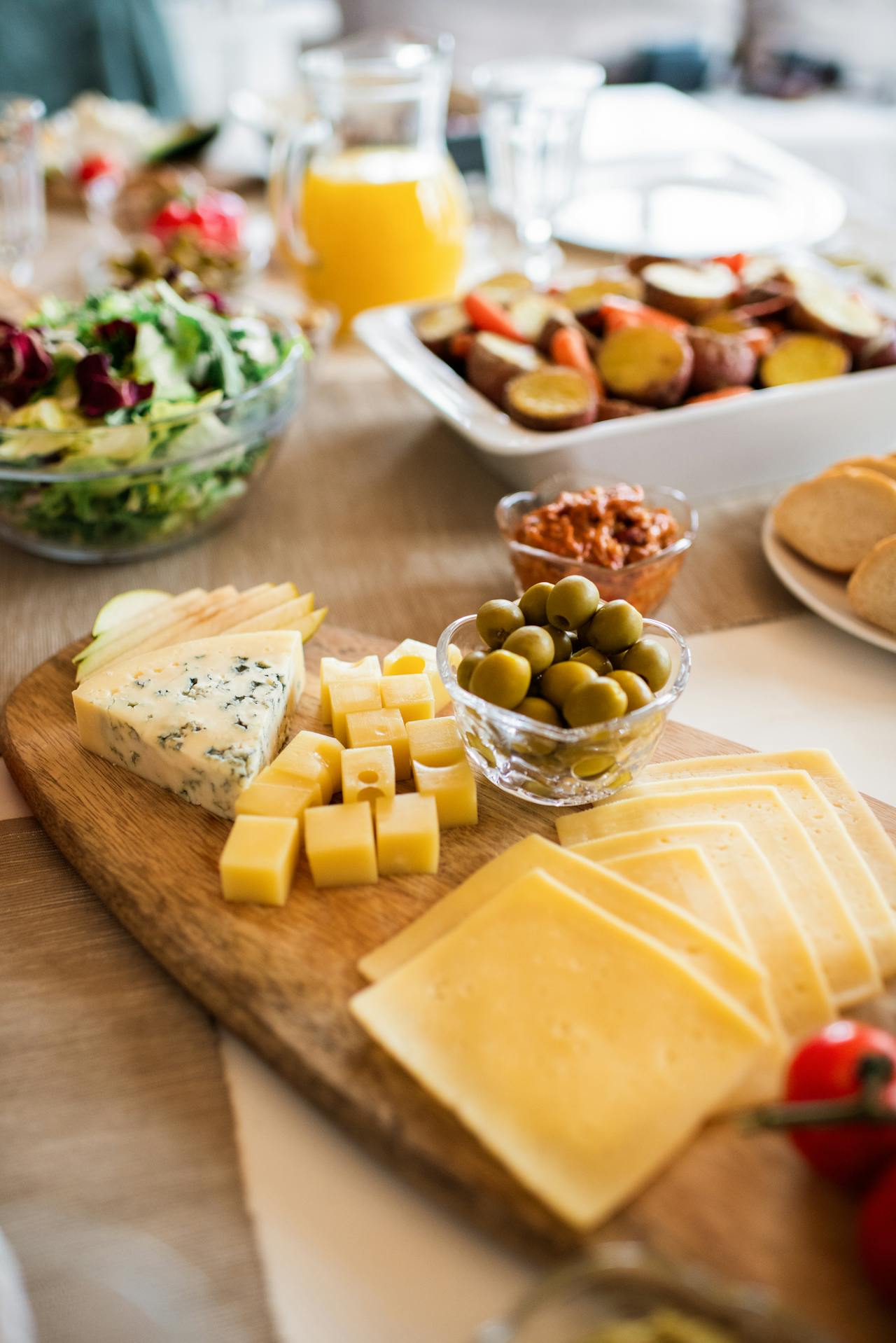
What Are the “Best” Cheeses?
I’d imagine that if you’re over the age of 50, there’s been a point in your life where you’ve mistakenly believed that cheese is “the devil.”
If not, that’s great, it means you either didn’t believe what the media was telling you…or you were smart enough to realize that if it was in the Bible and enjoyed for centuries prior to ours, it’s probably not bad.
That being said, there are all kinds of cheeses, probably thousands of varieties.
I won’t get into extremely artisan cheese in this article, but I do want to highlight the best “kinds” of cheese.
Now, before I proceed, I should clarify that whenever you’re considering a cheese, grass-fed and organic options are almost always superior to conventionally sourced cheese.
However, that doesn’t mean you should ignore cheese on this list if it’s not grass-fed or organic, as the macro and micronutrient profile should/could make up for the inferior sourcing.
Now let’s get into the meat…um, cheese of the topic.
9 Great Cheeses for Better Health
OK, there’s really no need to warm you up.
Let’s talk cheese.
Additionally, this is not necessarily in order of “best,” but a collection of 10 phenomenal cheeses to consider adding to your plate.
1- Gouda:
As many of you are aware, one of my favorite vitamins is vitamin K2. And since it’s challenging to obtain via diet alone, it’s reassuring to know that cheese is a stellar vehicle for K2 delivery.
Gouda, especially when aged, is a standout cheese rich in vitamin K2, a nutrient vital for bone and cardiovascular health.
Aged Gouda can contain up to 72.9 mcg of vitamin K2 per 100 grams. Grass-fed Gouda not only offers this benefit but also provides higher levels of omega-3 fatty acids and CLA (conjugated linoleic acid), which have anti-inflammatory properties. Additionally, its aging process enhances flavor and reduces lactose content, making it suitable for those with lactose intolerance.
2. Jarlsberg
I doubt this is a cheese many of you turn to when you’re opening up the cheese drawer, but you should.
Jarlsberg is from Norway and is a cheese also notable for its high vitamin K2 content, with approximately 73 mcg per 100 grams. This cheese supports bone health and may help prevent arterial calcification. While specific grass-fed versions are less common, sourcing Jarlsberg from reputable producers ensures quality.
3 - Parmesan:
Parmesan or Parmigiano-Reggiano is a hard, aged cheese packed with protein and calcium.
I’d consider this one of the best cheeses because it tastes amazing and is easy for almost anyone to eat (even people with dairy allergies).
The aging process not only intensifies its flavor but also reduces lactose content.
Parmesan contains approximately 23.5 mcg of vitamin K2 per 100 grams. And since most real Parmesan is grass-fed, it also enhances its nutritional profile, offering higher levels of omega-3s and CLA than other cheeses.
4 - Aged Cheddar:
Cheddar, and especially aged cheddar, is probably most Americans’ home base for “healthy cheese.”
They’re accessible, affordable, and approachable in terms of taste.
Cheddars are also rich in protein, calcium, and vitamin K2, with about 23.5 mcg per 100 grams.
Like Parmesan, the aging process reduces the lactose content considerably, making it more digestible. Grass-fed aged cheddar provides additional benefits, including higher omega-3 fatty acids and CLA levels.
The other thing with this kind of cheese is that there are many, many varieties, so it’s pretty easy to find one that’ll match what you like.
5 - Feta:
Feta cheese, traditionally made from sheep's milk, is lower in calories and fat compared to many other cheeses, which isn’t necessarily a bad thing.
A cheese that is low in fat, like Feta, is typically higher in protein, which is great.
Feta cheese also contains beneficial nutrients like calcium and B vitamins.
6 - Cottage Cheese:
One of the reasons I like cottage cheese is that it’s both easy to eat and affordable.
It’d be quite difficult, and expensive, to sit down and eat 4-5 ounces of Parmesan Reggiano. But you could eat 10 oz. of cottage cheese no problem,
Cottage cheese is a fresh cheese known for its high protein and low fat content.
While it's more commonly sold in a conventional form, where it is an excellent source of calcium and B vitamins. When you opt to go with grass-fed varieties, you’ll get higher omega-3 fatty acids and CLA levels.
7. Ricotta:
I’d imagine most people associate ricotta with some kind of pasta dish, as it’s frequently included in recipes and not frequently enjoyed on its own.
However you decide to eat ricotta, you should know this soft cheese is rich in protein and calcium.
Grass-fed ricotta offers additional health benefits, including increased omega-3 fatty acids and conjugated linoleic acid (CLA).
8 - Swiss Cheese:
Swiss cheese is a polarizing cheese because not everyone appreciates its distinct flavor profile.
That being said, it is well-known for being high in protein and also containing a high amount of calcium content, and vitamin B12, which is an absolutely essential micronutrient.
Grass-fed Swiss cheese enhances these benefits, offering higher levels of omega-3 fatty acids and CLA.
9 - Goat Cheese (Chevre):
Goat cheese (or chevre) is often found in a log form and is a soft, tangy cheese that is incredibly popular for its spreadability.
As it’s not dairy, it is easier to digest for some individuals due to its different protein structure compared to cow's milk cheese. High in protein, it's lower in calories and fat, and contains beneficial fatty acids as well. Grass-fed goat cheese is rich in omega-3 fatty acids and CLA.
Cheeses to Avoid?
There are plenty of cheeses to avoid. Almost all of them are fake cheese.
I don’t recommend vegan cheese made from seed oils, as seed oils, by and large, are problematic because of their unbalanced Omega-6 ratios.
I’m not saying you should never eat them, but don’t make them a staple.
Additionally, other fake cheeses, such as Velveeta, American cheese, and nacho cheese, should be avoided as they are typically made from artificial ingredients.



